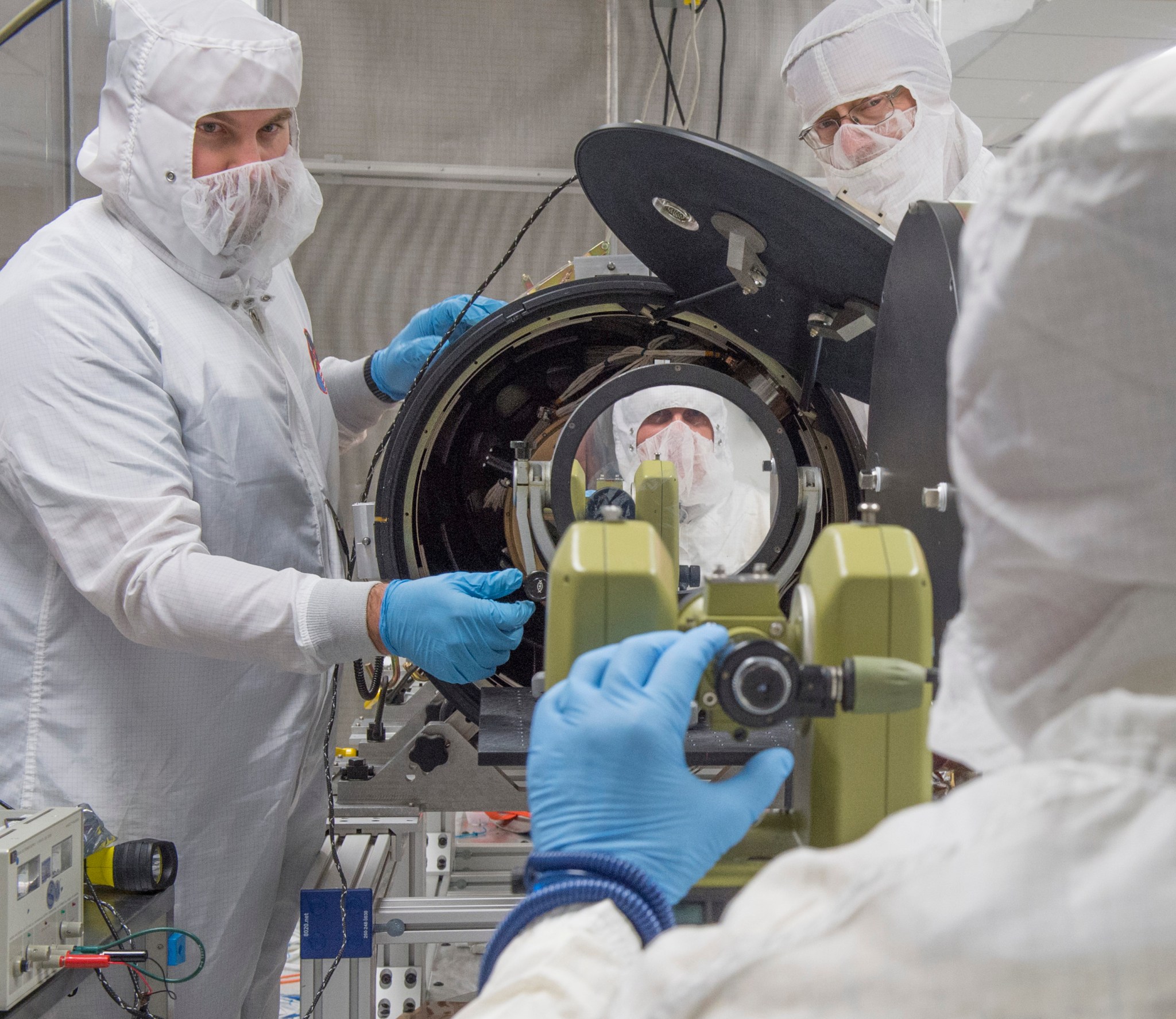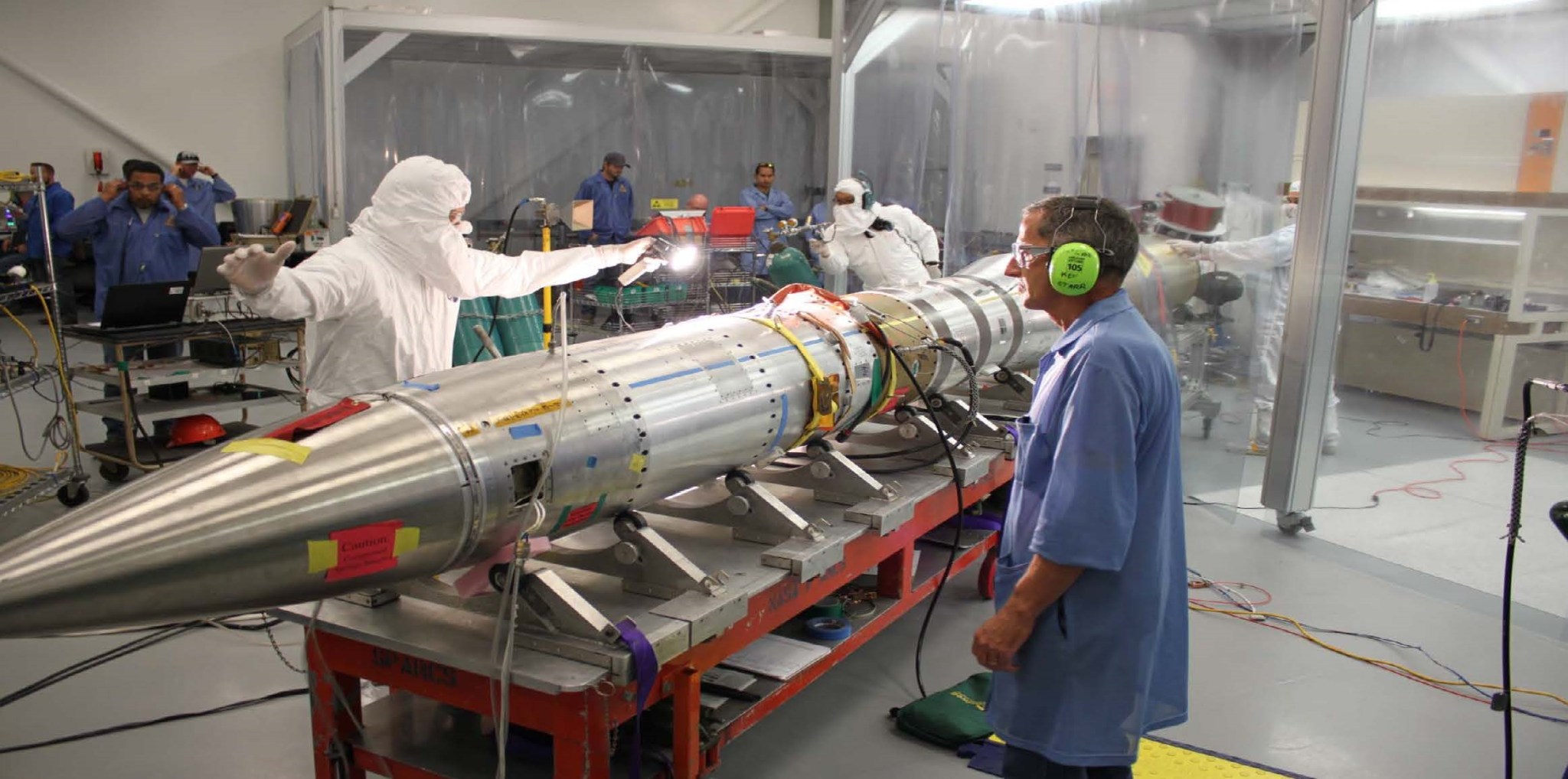UPDATE (9:30 a.m. EDT, July 28, 2016): The NASA Hi-C payload was launched on a Black Brant IX suborbital sounding rocket at 12:26 p.m. MDT (3:26 p.m. EDT) July 27 from the White Sands Missile Range in New Mexico. No science data was captured during the flight due to an experiment system problem. The 1,158 pound payload flew to an altitude of approximately 180 miles. The payload has been recovered.
UPDATE (4 p.m. EDT, July 22): The launch of the Hi-C payload on a NASA Black Brant IX suborbital sounding rocket from the White Sands Missile Range has been rescheduled for July 27 between 12:26 – 1:13 p.m. MDT (2:26 – 3:13 p.m. EDT).

NASA and its partners are getting ready to launch a rocket-borne camera to the edge of space at 12:36 p.m. Mountain time on July 19, 2016, on its second flight to study the sun. The clarity of images returned will provide scientists around the world with clues to one of the biggest questions in heliophysics – why the sun’s atmosphere, or corona, is so much hotter than its surface.
The precision instrument, called the High Resolution Coronal Imager, or Hi-C, will fly aboard a Black Brant sounding rocket, lifting off July 19 from White Sands Missile Range in New Mexico.
“Our team, which includes partners foreign and domestic, have done incredible work to get us ready for launch,” said Jonathan Cirtain, principal investigator for Hi-C and manager of the Science Research Office at NASA’s Marshall Space Flight Center in Huntsville, Alabama. “The instrument has demonstrated the power of high resolution coronal imaging and we expect to demonstrate that conclusively July 19. We are ‘go’ for launch.”
Scientists anticipate Hi-C’s reflight will deliver images that could help explain why the corona is so hot. The sounding rocket will fly into space for only five minutes of observation time — but those five minutes can provide key information, because the observations occur up above Earth’s atmosphere, which blocks the extreme ultraviolet sun rays that hold information necessary to untangle the coronal heating mystery.
During its first flight in July 2012, Hi-C captured the highest-resolution images ever taken of the million-degree solar corona, revealing previously unseen magnetic activity. For decades, scientists have suspected that activity in the sun’s magnetic field is heating the corona.
“The magnetic field plays a crucial role in dictating the structure of the sun’s atmosphere,” said Cirtain. “It also acts as a conduit for mass and energy to flow into the solar corona and solar wind – some of it heading toward Earth as powerful solar flares that can disrupt radio and GPS communications. It’s critical to understand the process by which the sun releases these bursts of energy.”
The telescope, the centerpiece of a payload weighing 464 pounds and measuring 10-feet long, is designed to observe a large, active region in the sun’s corona in fine detail. The telescope will acquire data for five minutes, taking about one image every five seconds.
Partners associated with the development of the Hi-C telescope include the Smithsonian Astrophysical Observatory in Cambridge, Massachusetts; the University of Central Lancashire in England; and Lockheed Martin’s Solar Astrophysical Laboratory in Palo Alto, California.
Hi-C is supported through NASA’s Sounding Rocket Program at the agency’s Wallops Flight Facility on Wallops Island, Virginia, which is managed by NASA’s Goddard Space Flight Center in Greenbelt, Maryland. NASA’s Heliophysics Division manages the sounding-rocket program for the agency.
More about Hi-C:
https://www.nasa.gov/mission_pages/sunearth/news/HI-C.html
https://www.nasa.gov/topics/solarsystem/features/hic2013.html
More about sounding rockets:
More about NASA heliophysics research:


























